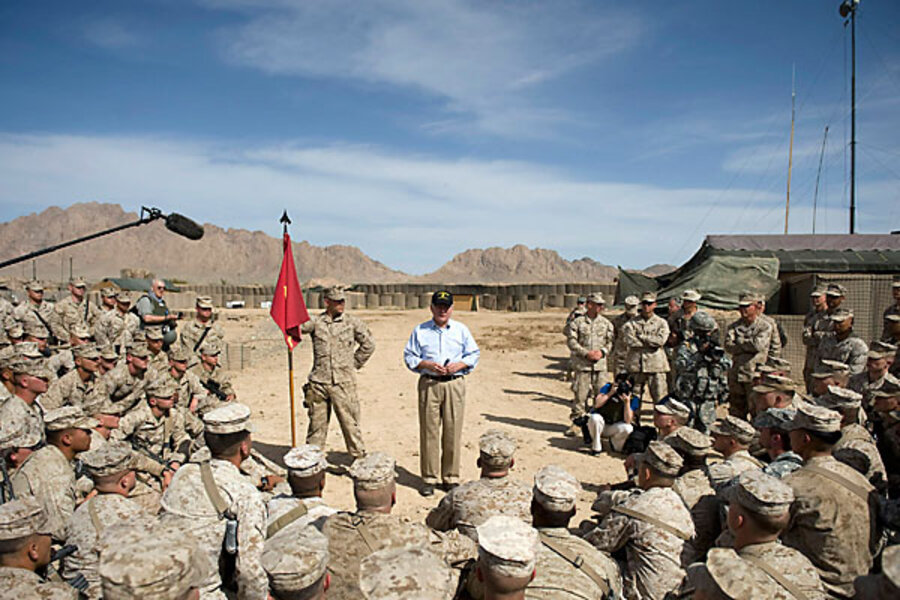Afghanistan war: Fight for Kandahar won't be like fight for Marjah
| Washington
The operation that American and coalition forces are planning for Kandahar in southern Afghanistan won’t look like D-Day, the top commander there said Tuesday.
Fresh off a recent success, so far, in Helmand Province, American military planners are thinking ahead to the next phase of challenging the Taliban in southern Afghanistan: Kandahar. But the fight for Kandahar – described as the New York City of Afghanistan for its cultural, political, and economic significance – is expected to be more measured than the operation in Marjah in Helmand, which was a precision strike that began with the insertion of hundreds of US marines by helicopter.
“There won’t be a D-Day that is climactic,” said Gen. Stanley McChrystal, the top commander there told reporters in Kabul, during a trip in which he escorted Defense Secretary Robert Gates. “It will be a rising tide of security when it comes.”
The operation in Marjah included about 2,500 marines and 1,500 Afghan soldiers – with as many as 10,000 troops in support. The top Marine commander in Marjah said last week the objective there was to come in “big, strong, and fast, [to] put the enemy on the horns of a dilemma.”
By contrast, the mission in Kandahar, expected to begin by summer, will be more gradual. Few details are clear, even in a counterinsurgency in which the NATO command has telegraphed its intentions before starting an operation, such as in Marjah last month. But military officials say Kandahar will require a more nuanced, measured approach in which forces will build up slowly, probably on the outskirts, before entering the city itself perhaps months later.
Kandahar is a much larger city and province, and coalition forces will take their time to enter due to the area's more complex political and tribal nature.
Marjah in 'hold and build' phase
McChrystal has had his eye on Kandahar, which the Taliban took over years ago, for a long time. But when he took charge of the mission last year, many American forces were already amassed in Helmand to the west.
While Helmand was a Taliban stronghold and much of the poppy crop that provides financial support for the insurgency grows there, many experts say it is not a strategic prize. Nonetheless, McChrystal mounted his first operation there under the new US strategy (and increased troop strength), as a demonstration of what could be done. Citing the clear-hold-build approach, military officials say that most combat operations are over in Marjah and that it is now in the “hold and build” phase.
That leaves room to begin planning for Kandahar and the districts that surround it, including Zhari, Panjawai, Khakrez, Arghandab, and Dand. (Monitor report: the importance of Kandahar to winning the Afghanistan war.)
Counterinsurgency experts say these outer areas hold the key to success for coalition forces entering Kandahar itself.
Gates warns of 'dark days' ahead
While not referring to operations in Kandahar specifically, Secretary Gates sought to prepare the military and the American and international community for the likelihood that the next few months will be no cakewalk.
“There is still much fighting ahead, and there will assuredly be more dark days,” Gate said at a press conference Tuesday with Afghanistan President Hamid Karzai, in Kabul. But there is reason to be hopeful that Afghan and coalition forces can rout the hardest elements of the Taliban and establish security for the rest of the population, he said.
“Looking forward," Gates said, "there are grounds for optimism as our countries pursue what President Karzai has called an Afghan-led and Afghan-owned initiative to ensure peace and stability.”





